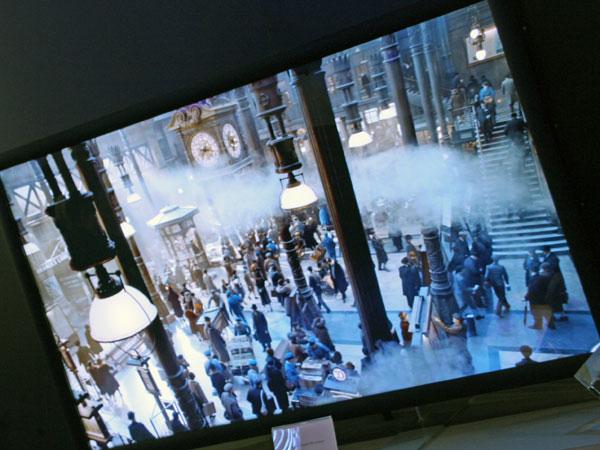NAB 2012: Dolby 3D

As you may already know, broadcast 3D is "frame-compatible," which means it must fit within the standard broadcast bandwidth. To do this, broadcasters cut the vertical or horizontal resolution in half to create an "over-under" or "side-by-side" signal. Dolby 3D adds a little extra data to the signal at the broadcaster's end that allows a compatible display to restore the lost resolution. In addition, users have some control over the depth of the 3D effect, allowing them to adjust it for maximum comfort. The goal is to enable broadcasters and TV manufacturers to offer full-res 3D by 2013 or 2014.
Another aspect of Dolby 3D is a significant improvement in autostereoscopic (glasses-free) flat panels. The system provides 28 stereo views in so-called "viewing cones," and a special algorithm, which is adapted to each panel's characteristics, smoothes out the transition from one cone to the next as you move around the display.
The demo was shown on a 4K LCD TV with a lenticular filter, providing roughly 2K resolution for each eye, and the transition from one position to the next was indeed much smoother than I've ever seen before. However, it was not completely seamless, which a Dolby rep admitted would never be possible. Still, it was very impressive, and the 3D effect was quite apparent. In fact, it was the best autostereoscopic display I've ever seen.
























































